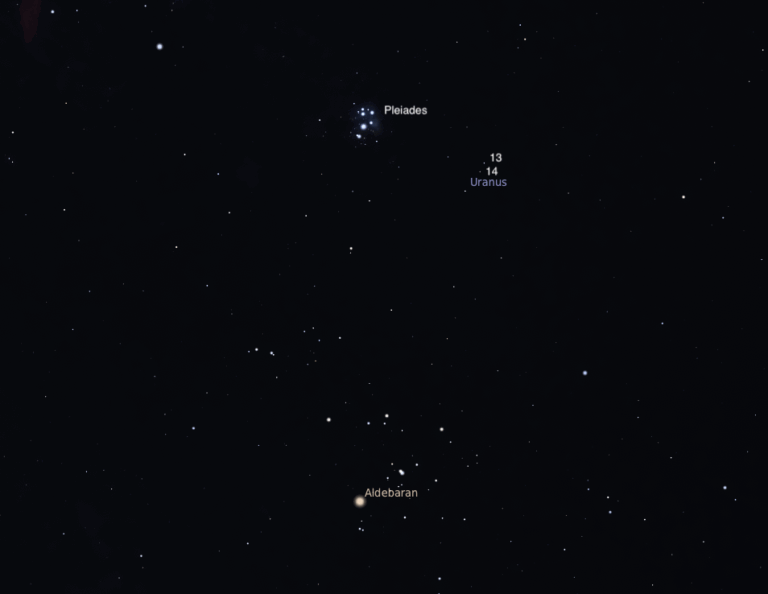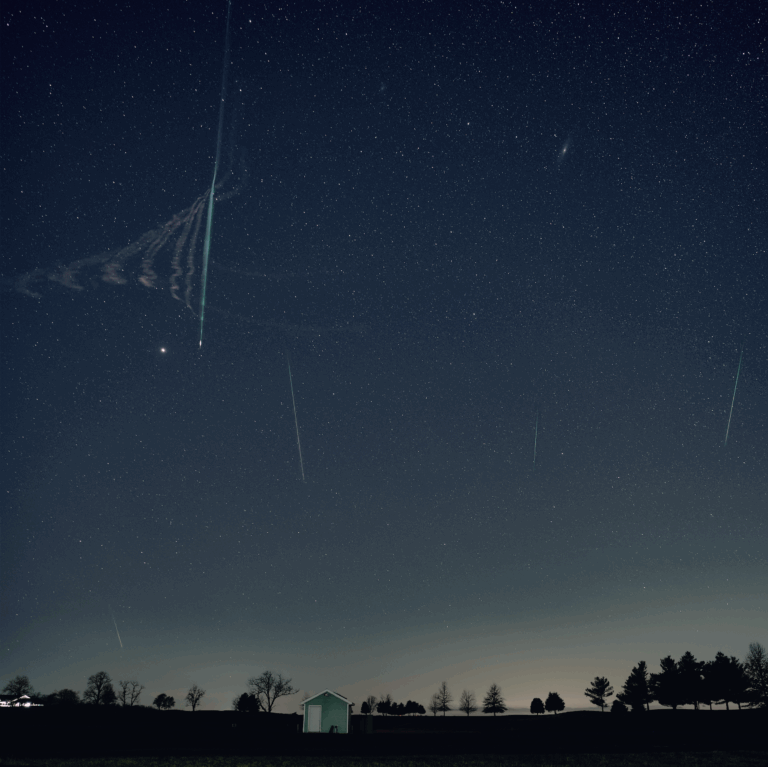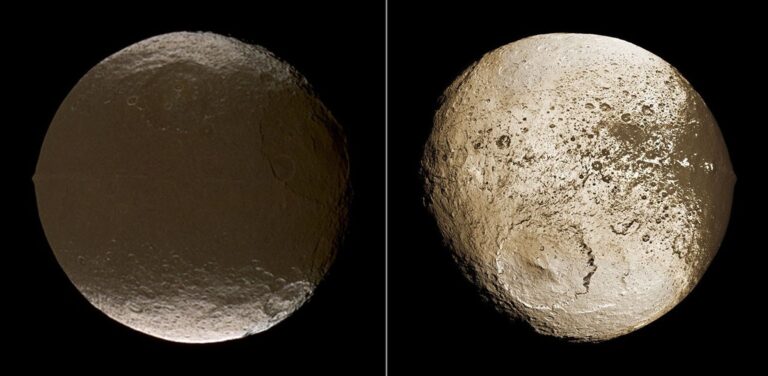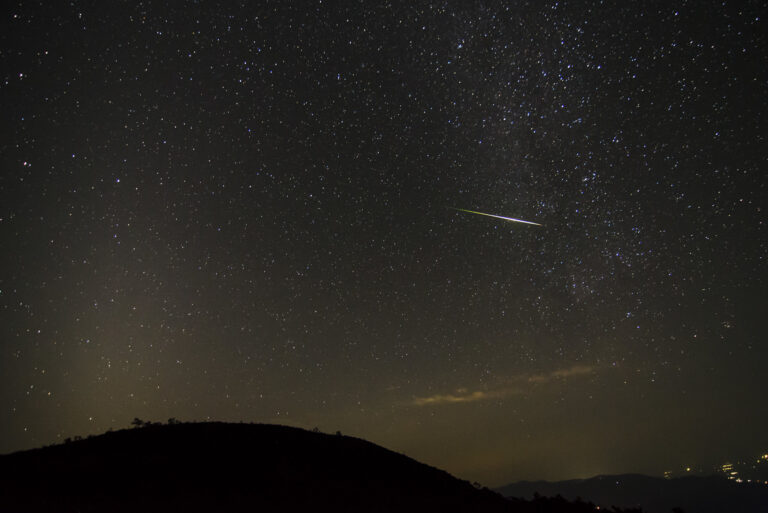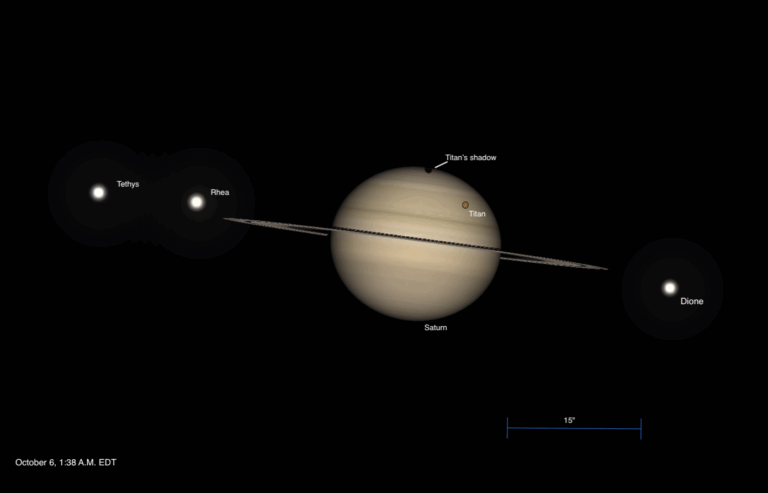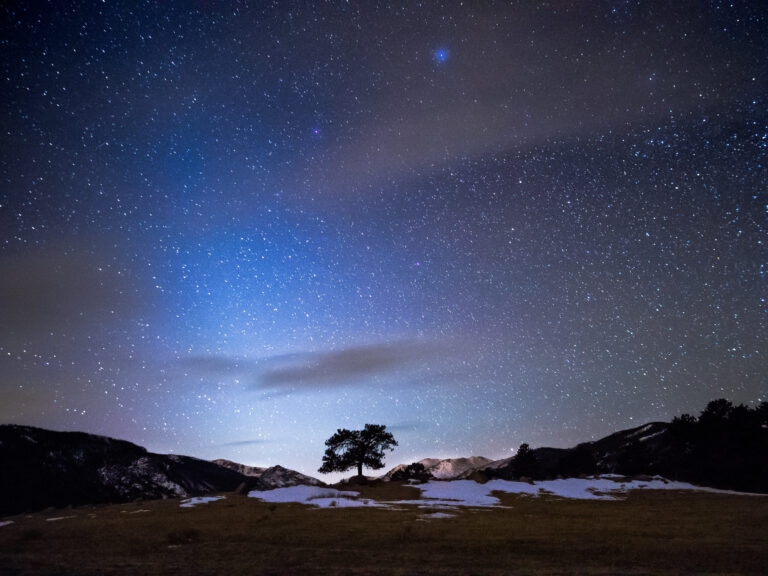
Key Takeaways:
- Notable planetary phenomena include Saturn reaching a stationary point near a waxing Moon in Aquarius (November 28-29) and Mercury concluding its retrograde motion to become brighter and visible with Venus in the predawn sky (November 29, December 5).
- Opportunities for observing satellite dynamics are presented by Titan's reappearance from occultation by Saturn, followed by Tethys's occultation (November 30), and a sequence of events involving Jupiter's Galilean moons, specifically a close approach between Ganymede and Europa, followed by Ganymede's shadow and moon transit across Jupiter's disk (December 1).
- Stellar and deep-sky observations include the binary system 145 CMa in Canis Major, known for its contrasting colors (December 2), and a significant lunar occultation event where the nearly Full Moon passes in front of multiple stars within the Pleiades cluster (M45) (December 3).
- The Moon reaches perigee and subsequently its Full phase, classified as the December Cold Super Moon, on December 4, offering an optimal period for telescopic observation of lunar surface features such as the craters Grimaldi and Riccioli.

Sky This Week is brought to you in part by Celestron.
Friday, November 28
First Quarter Moon occurs at 1:59 A.M. EST. While Luna is not visible in the morning, our satellite will grace the evening sky, hanging near Saturn as the planet comes to a stationary point at 8 P.M. EST. Both are located in Aquarius, high in the south a few hours after sunset. First-magnitude Saturn is the brightest light in this region of the sky and should be readily visible to the naked eye, even with the waxing Moon nearby. The planet hangs just to the upper left of the crescent Moon.
If you’ve got a telescope, take some time to admire Saturn’s lovely rings through the eyepiece — although they currently appear quite thin, tilted just 0.4° to our line of sight. And just 4.4° to Saturn’s northeast is distant Neptune, shining faintly at magnitude 7.7. Scan slowly to its location with your telescope and look for a dim, “flat” star with a blueish or grayish hue. Its tiny disk stretches just 2” across, compared with Saturn’s disk of 18”.
Sunrise: 7:00 A.M.
Sunset: 4:36 P.M.
Moonrise: 12:49 P.M.
Moonset: —
Moon Phase: Waxing gibbous (59%)
*Times for sunrise, sunset, moonrise, and moonset are given in local time from 40° N 90° W. The Moon’s illumination is given at 10 P.M. local time from the same location.
Saturday, November 29
Mercury now comes to its stationary point at 10 A.M. EST, ending its retrograde path and turning to slide eastward (prograde) against the background stars once more. The solar system’s smallest planet, visible in the eastern sky before sunrise, shines at magnitude 0.4, significantly brighter than the last time we viewed it a few days ago.
Try for it some 40 minutes before sunrise, when Mercury is 8° high and climbing above the eastern horizon in the constellation Libra. Bright Venus — magnitude –3.9 — has just cleared the horizon at this time. Give it another 10 minutes, and it reaches 2° in altitude. You’ll need a clear horizon to spot it, but it’s bright, which certainly helps.
If you’ve got a telescope, take a few minutes to observe each of the two planets through the eyepiece before you need to pack away your equipment prior to sunrise. Mercury’s 8”-wide disk is some 30 percent lit; compare this with Venus 10”-diameter disk, which is nearly fully illuminated at 99 percent.
Later today, the Moon passes 4° north of Saturn at 2 P.M. EST, then passes 3° north of Neptune at 9 P.M. EST. By evening, our satellite will lie in Pisces, now to the upper left of naked-eye Saturn, reversing the pair’s positions from yesterday.
Sunrise: 7:01 A.M.
Sunset: 4:35 P.M.
Moonrise: 1:12 P.M.
Moonset: 12:33 A.M.
Moon Phase: Waxing gibbous (70%)

Sunday, November 30
Titan reappears from an occultation behind Saturn this evening beginning at 6 P.M. EST, a short-lived event visible for those with dark skies in the eastern half of the U.S. Those on the East Coast will have the easiest time; observers across the Midwest will find the sky starting to darken but may also have some luck.
Make sure your telescope is zeroed in on Saturn at least several minutes before the start time. Keep a close eye on the planet’s southeastern limb, as this is where the large moon will appear. It takes some 15 minutes for mid-8th-magnitude Titan to fully emerge from behind Saturn, and it’s a fascinating event to watch. Observers farther west will see the moon moving away from Saturn to the planet’s east after darkness falls in the Mountain and Pacific time zones.
Also visible may be Saturn’s trio of 10th-magnitude moons, Tethys, Rhea, and Dione. Dione lies to Saturn’s east, off the end of the rings, while Rhea is far from the planet on the west and Tethys closer to Saturn, also on the west. Tethys is closing in for its own occultation behind the ringed world, and will disappear behind Saturn’s northwestern limb shortly after 9:45 P.M. EST. Note, however, that Tethys is very close to the edge-on rings, which may dim the moon’s brightness somewhat.
Sunrise: 7:02 A.M.
Sunset: 4:35 P.M.
Moonrise: 1:36 P.M.
Moonset: 1:43 A.M.
Moon Phase: Waxing gibbous (80%)
Monday, December 1
Jupiter is the object you’ll want to be watching this evening, as Ganymede prepares to transit along with its shadow. About an hour before that event starts, Ganymede and Europa line up as the two moons pass each other east of Jupiter.
The gas giant rises shortly before 8 P.M. local time. Once it’s visible above the horizon, train your telescope on it to check out the view. Io lies alone to the planet’s west; Callisto is far to the planet’s east. Early in the evening, Europa sits off Jupiter’s eastern limb and Ganymede is farther east. Watch as the two moons approach each other, finally passing just minutes before midnight EST, when Ganymede moves 12” due south of Europa. The two moons may appear to briefly blur into one for observers.
After this, Ganymede continues to close in, while Europa slips farther away to the east. Around 1:07 A.M. EST (now December 2nd for the Eastern and Central time zones), Ganymede’s shadow appears on Jupiter’s cloud tops to precede the moon across. It will take the large shadow some 10 minutes to fully appear. It continues across the face of Jupiter as Ganymede approaches; by 4:18 A.M. EST (now the 2nd across the U.S.), the shadow finally reaches the western limb and begins its egress. Ganymede finally moves onto the disk not long after, at 4:44 A.M. EST. The large moon will take more than three hours to cross Jupiter’s disk. Observers in the Eastern and Central time zones will see the Sun rise with Ganymede still making its way across; the moon finally ends its transit as the Sun is rising across the Mountain time zone.
Sunrise: 7:03 A.M.
Sunset: 4:35 P.M.
Moonrise: 2:02 P.M.
Moonset: 2:57 A.M.
Moon Phase: Waxing gibbous (88%)
Tuesday, December 2
The colorful double star Albireo in Cygnus the Swan is a summertime treat. Although different constellations now grace our year-end sky, there’s a similar jewel visible on December evenings in the constellation Canis Major the Big Dog.
Most famous for its brightest star, Sirius (Alpha [α] Canis Majoris), Canis Major is home to many other worthy sights. One is 145 CMa, a lovely double star also called the Winter Albireo for its resemblance to the eponymous pair. 145 CMa is located near the hindquarters of the Big Dog, to the lower left of bright Sirius. Around local midnight, the entire constellation is visible in the southeast, with blazing Sirius well on display. From Sirius, drop down about 11° to find 2nd-magnitude Wezen (Delta [δ] CMa). From this star, move about 3.6° northeast to 145 CMa.
Shining with a combined magnitude of 4.8, 145 CMa consists of a magnitude 5.0 primary and magnitude 5.9 companion. They are separated by almost 27”; Astronomy contributor Phil Harrington says he can regularly split them in 16×70 binoculars. Any small scope should also do the trick.
The reason for their name is the pair’s contrasting colors: The brighter primary shines with a distinct golden hue, while the fainter secondary appears blue-white.
Sunrise: 7:04 A.M.
Sunset: 4:35 P.M.
Moonrise: 2:34 P.M.
Moonset: 4:14 A.M.
Moon Phase: Waxing gibbous (95%)

Wednesday, December 3
The Moon passes 5° north of Uranus in the constellation Taurus at 10 P.M. EST; before that, though, a nearly Full Moon passes in front of several stars in the Pleiades star cluster (M45), occulting them for observers in North America, Greenland, and parts of Europe. The entire event takes place between about 7 P.M. and 9:30 P.M. CST, with at least some disappearances and reappearances visible across the U.S.
By the time darkness falls, the Pleiades and the Moon should be visible close together in the eastern sky. The first bright star in the cluster to disappear behind our satellite is magnitude 3.7 Electra (17 Tauri), which vanishes behind the dark leading edge of the Moon just after 7 P.M. CST. Other stars, including magnitude 4.3 Taygeta (19 Tau) and magnitude 3.9 Maia (20 Tau), follow. To watch the event, you’ll want binoculars or a telescope — the latter is best. Bump up the magnification to really zoom in on the Moon’s leading edge, which will cut more of the bright, blinding Moon out of your field of view and let you focus on its approach to each star.
For details on the exact timing of disappearances and reappearances from your location, visit the International Occultation Timing Association’s website for lunar occultations here and scroll down to the December 4 events (all times are given in Universal Time).
Uranus, now just past opposition, still lies about 4.5° south of the Pleiades. It is not far from a pair of similarly bright 6th-magnitude stars, 13 and 14 Tau, just 0.4° east of the latter. You’ll need binoculars or a telescope to spot the planet, and may find it challenging with the bright Moon nearby.
Sunrise: 7:05 A.M.
Sunset: 4:35 P.M.
Moonrise: 3:13 P.M.
Moonset: 5:36 A.M.
Moon Phase: Waxing gibbous (99%)

Thursday, December 4
The Moon reaches perigee, the closest point to Earth in its orbit, at 6:07 A.M. EST, when it stands 221,806 miles (356,962 kilometers) away. Some 12 hours later, Full Moon occurs at 6:14 P.M. EST, bringing us the December Cold Moon.
Because this Full Moon occurs when the Moon is near its closest point to Earth, it is classified as a Super Moon, closing out the year as the third in a series of four Super Moons that began in October. According to the late astronomer Fred Espenak’s AstroPixels website, the next Super Moon will be January 3, 2026, followed by a lull until November 2026. (Note, however, that the definition of Super Moon can differ between resources; for example, the Royal Observatories Greenwich doesn’t consider January or November 2026’s Full Moons close enough to Earth to be called Super Moons. Instead, this institution classifies December 2026’s Full Moon as the next Super Moon after today.)
With the Moon so big and bright in the sky, it makes for a prime target with a telescope. Look toward Luna’s western edge for the dark, round spot of the crater Grimaldi. Spanning some 107 miles (173 km) and sinking 1.7 miles (2.7 km) deep, Grimaldi appears at first glance to have a flat, dark floor of uniform gray. But look closer, and you’ll notice color variations in the shading, as well as streaks of lighter ejecta thrown across the crater by later impacts. Also compare Grimaldi’s smooth floor to that of Riccioli to its east. The latter’s floor is much rougher, as it is too far from Oceanus Procellarum to have been flooded with lava from this source.
Sunrise: 7:06 A.M.
Sunset: 4:34 P.M.
Moonrise: 4:03 P.M.
Moonset: 6:57 A.M.
Moon Phase: Full
Friday, December 5
Our view of Mercury has continued to improve over the past few days. Rising almost two hours before the Sun, the little planet appears 7° high an hour before sunrise in the east. It shines at magnitude –0.3, an easy-to-find naked-eye object in the slowly brightening sky. Through a telescope, its disk now appears 54 percent lit, a bigger chunk receiving sunlight compared to earlier in the week and a tidy explanation for its increase in brightness.
Mercury will reach its greatest elongation west of the Sun in just two days, when it will stand 21° from our star. High above it and slightly to the left is magnitude –0.1 Arcturus in Boötes, while magnitude 1.0 Spica sits to Mercury’s upper right. See how long you can follow these stars as well as the planet into the encroaching dawn.
Bright Venus (magnitude –3.9) chases Mercury up into the predawn sky, now rising about 30 minutes before the Sun. There’s a brief opportunity to view it, but only if your horizon is clear. Venus is still 99 percent lit and virtually indistinguishable from a full phase.
As always, make sure to put away any optics at least several minutes before sunrise from your location.
Sunrise: 7:07 A.M.
Sunset: 4:34 P.M.
Moonrise: 5:05 P.M.
Moonset: 8:14 A.M.
Moon Phase: Waning gibbous (98%)

